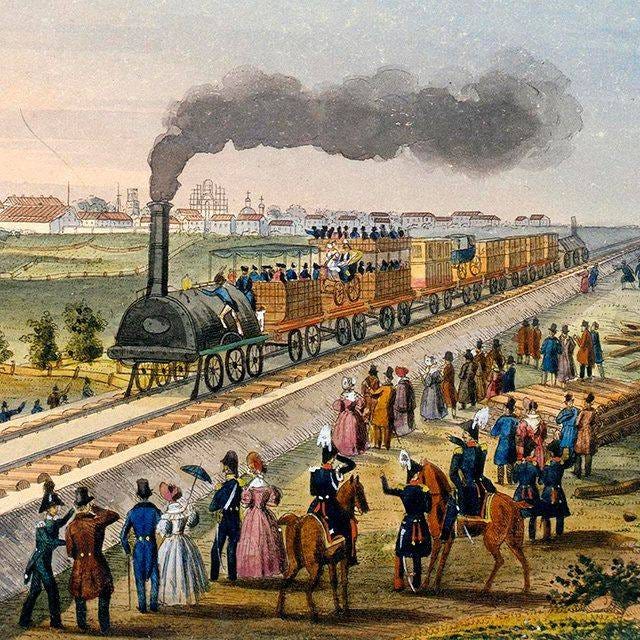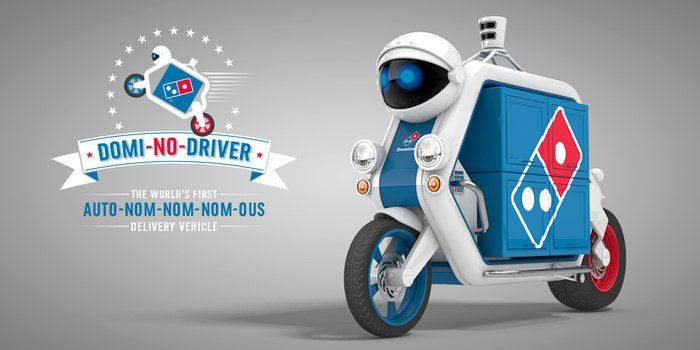NVIDIA | Or AI Investing Another Way?
Lessons From Investing In Prior Technological Revolutions
‘Artificial Intelligence’ or ‘AI’ has become an esoteric buzzword in recent years, but how should investors factor it into their capital allocation investment decisions?
AI undoubtedly marks the dawn of a new industrial revolution. It represents the holy grail by enabling us to achieve more with less, performing tasks much faster and more efficiently than ever before. This acceleration will undoubtedly allow us to fast-track innovation within a multitude of industries providing a boost in productivity. Think healthcare firms using AI for drug discovery and diagnosis; financial institutions employing AI for fraud detection and risk analysis; or retailers and logistics companies using AI to optimize operations.
Is NVIDIA A Good Investment?
Jensen Heung, founder and CEO of NVIDIA recently gave a keynote speech. It runs for a couple of hours, but I would commend it to you as a productive use of your time as he explores the realms of AI possibility.
NVIDIA is a leading provider of accelerated computing solutions, primarily known for its powerful graphics processing units (GPUs). However, the application of its GPUs extends well beyond graphics, encompassing tasks that require high compute power such as Bitcoin mining, artificial intelligence, and machine learning. This versatility is largely due to NVIDIA's advancements beyond hardware, notably through its CUDA (Compute Unified Device Architecture) parallel computing platform, which enables developers to fully leverage the power of its GPUs. It is growing its capabilities both organically and through acquisitions. Of note are the recent integrations of Mellanox, which enhances its capabilities with high-performance networking solutions, and OpTeamizer, bolstering its proficiency in optimizing AI models.
Is NVIDIA at the cutting edge of the AI revolution? Yes.
Is NVIDIA the best way for investors to play the AI revolution? Perhaps not.
NVIDIA has seen its market cap increase by $1 trillion in the first five months of 2024 alone, and it has enjoyed a five fold increase in valuation over the last 18 months. Is this rational? Or has the market price run way too far ahead of intrinsic value?
The company is currently trading at 33 times its top line revenue, meaning that even if it had no business costs, it would yield only a 3% return for investors. Unfortunately, along with every other business on the planet, it does incur costs. After factoring those into the equation, it is capitalized at 81 times its most recent annual GAAP net earnings, implying a 1.2% earning yield for today’s investor and significant capital risk due to over valuation. Does that meet your hurdle rate when Treasuries are yielding around 5% and with no capital at risk?
NVIDIA today looks a lot like Microsoft did at the beginning of the millennium; great company, great products but way over valued. Despite continuing to see robust revenue and profit growth in the years that followed, Microsoft’s share price corrected by moving sharply lower and it took 15 years before it fully recovered – a miserable time for investors. The moral of the story is that a great company at the wrong price will always be a bad investment, so take heed – price matters! (click here for the full Microsoft case study).
As Mark Twain once said, “History doesn’t repeat, but it rhymes”. Investors should take heed when considering NVIDIA as an investment at today’s valuation.
So, if not NVIDIA, how can an investor play the AI revolution?
Lessons From Prior Technological Revolutions
To answer that, let's examine lessons from investing in prior technological revolutions. In so doing, you will discover that those who profit the most are not always the obvious candidates.
Consider the advent of human flight. This was truly revolutionary. An arduous and expensive journey by sea that had previously taken weeks to complete had suddenly been replaced by a comfortable flight taking a matter of hours. It paved the way for international commerce, speedy freight delivery and the birth of the mass tourism industry. How much more revolutionary can anything be? So it should come as no surprise that investors poured money into the airline industry.
However, deregulation led to excessive expansion, intensifying competition and squeezing profit margins. Concurrently, volatile oil and fuel prices, economic downturns, and labour disputes exacerbated by industrial action created a perfect storm. As a result, one airline after another succumbed to insolvency. Among those affected in the U.S. alone were Air Florida, Braniff International Airways, Capitol Air, Frontier Airlines, Pacific Southwest Airlines, People Express Airlines, Texas International Airlines, Trans World Airlines (TWA), Eastern Airlines, Pan American World Airways (PanAm), Continental, Laker Airways, and Midway.
As a matter of fact, the airline industry has to date consumed far more capital than it has ever created. This led Warren Buffett to quip, “From the era of the Wright Brothers and the inaugural flight at Kitty Hawk, investors have continually funnelled capital into a seemingly bottomless pit. Indeed, if a farsighted capitalist had been present at Kitty Hawk, he would have done his successors a huge favour by shooting Orville down.”
The really interesting part is that while the aviation industry has always been a poor investment, other tangential businesses in different industries were a far better bet. For example, American Express and Duty Free shopping have each made more profit out of the aviation sector than any airline ever has!
Similarly, the advent of rail travel in the 1800s led to a massive investment boom in the railroad sector, which promised rapid transportation, economic growth, and lucrative returns. Investors, enticed by the promise of high returns and the transformative impact railroads were expected to have on the economy, poured vast amounts of money into the sector. This private capital, often with the support of state and local governments, funded rapid construction of railroads.
However, this initial wave of exuberance waned as the market became saturated with capital which caused marginal returns on investment to dive. In response, companies felt compelled to overextend themselves, to build too quickly and to neglect prudent planning. Fierce competition and significant financial strain caused many railroad companies to go bankrupt and fortunes were lost by investors.
Despite the financial turmoil and the loss of vast amounts of money, the infrastructure left behind by these failed companies had lasting benefits. The railroads continued to function and played a crucial role in the broader economic landscape. The tracks laid and the connections established remained valuable, enabling more successful companies to expand their operations and facilitate the movement of goods and people across the country. This infrastructure helped to drive industrialization and economic growth long after the initial investment bubble had burst.
Once again, investing directly in the companies at the heart of the revolutionary shift was the obvious choice, but it proved not to be the best investment. The technology was revolutionary and unlocked enormous economic value, but the beneficiaries were a couple of degrees of separation removed from the industry at the centre of the revolution.
To hammer the point home, when the personal computer revolution arrived, investors threw money at companies manufacturing these groundbreaking machines, yet many of these companies ultimately failed. What investors overlooked were the broader benefits that affordable computing would offer to other industries—the true beneficiaries of the revolution.
This historical pattern repeats itself time and again. Is it probable that it will occur once more in the context of the AI revolution? I would argue that it is almost inevitable.
Discovery Of Tangential Beneficiaries
Back in 2010, if you had to invest your money for a seven year period in either Google, Facebook, Apple, Amazon or Domino’s Pizza, which company would you have chosen? More particularly, which company would have been at the bottom of your list?
Now look at the chart below. Surprised?
You wouldn’t consider Domino’s a technology company, but the irony is that it achieved remarkable success largely by riding the technology wave.
So while most investors played the 21st Century tech-revolution by ploughing capital into over valued technology stocks such as Amazon, Apple, Facebook and Google, they entirely overlooked better investments in fairly priced tangential beneficiaries such as Domino’s.
The Pizza company recognized the importance of digital transformation early and made it a core part of its strategy. Domino’s invested heavily in technology infrastructure, being an early adopter of online ordering platforms. It also introduced innovative digital solutions including delivery route optimization, real time order tracking and personalized rewards programs to enhance the customer experience. More recently it has been experimenting with autonomous robotic pizza delivery mechanisms.
When comparing the performance of Domino’s with the big-four tech giants, it isn’t that the tech companies have performed poorly. To illustrate the point, over the 2010 to 2017 period shown in the chart above, Facebook's revenues increased by 1,946%, Amazon's by 420%, Google's by 278%, and Apple's by 252%. In contrast, Domino’s only saw a 75% increase in its top line. However, when an investor overpays to invest in a company his return is significantly diminished because any future success has already been given away in the price paid for the shares in the first instance.
At the risk of repeating myself, price matters!
The moral across these stories—from airlines to railroads to information technology—is that during revolutionary shifts promising significant economic benefits, investors should focus on indirect beneficiaries of the new technology instead of following the crowd.
It's also crucial for the investor to avoid pitfalls by considering companies that are likely to overlook the AI revolution to their detriment. Many great businesses, buoyed by past successes, fail to adapt. Kodak, once dominant in photography, serves as a prime example—it disregarded the rise of digital photography and suffered collapse as a result. Likewise, Blockbuster, once a powerhouse in movie rentals, refused to acknowledge the transformative potential of streaming, leading to its demise at the hands of Netflix.
As Andy Grove once said, “Success breeds complacency. Complacency breeds failure. Only the paranoid survive.” One thing is for sure, there will be major casualties of the AI revolution and so an investor is best advised to look out for arrogance or short-sightedness of management in order to avoid capital loss.
There are many companies embracing AI, not all of which will be good investments, but they are worth calling out. Vodafone, the telecom company, currently uses AI to predict network and device issues before they occur. Bloomberg, the media company, uses AI to automatically generate news articles from companies' earnings releases. Fashion tech company Heuritech uses AI to scan social media images and provide predictive analytics to fashion brands on upcoming trends. Healthcare firms like Gilead Sciences and Moderna are using AI for drug discovery and development. Medical device companies like Abbott and Align Technology are building AI-powered devices. The list goes on. Among these progressive companies will be hidden gems which, due to AI, will outperform both the market and NVIDIA.
Please don’t get me wrong, NVIDIA is an incredible company. The problem lies not with the company itself but with its valuation. At a market capitalization of $2.6 trillion, it will take many years for NVIDIA to grow into its current valuation. Buying into the business at this price means paying a premium that gives away years of future value to the seller of those shares. I know which side of that trade I’d prefer to be on.
On its current trajectory, NVIDIA will be worth $2.6 trillion someday, but do you want to pay a future price for it today? Does the chart below make any sense to you?
So, in conclusion, when investing in the AI revolution, it isn’t about investing capital in the most obvious companies at over inflated share prices, which is only likely to result in disappointment. Instead, it’s about finding outstanding corporate leaders that embrace technological changes to drive efficiency, grow customer numbers and capture greater market share. Finding these businesses, in mundane industries, will undoubtedly result in outperformance.
The purpose of the Rock and Turner investment community is to share ideas and so, to that end, I invite thoughts and ideas on which fairly valued mundane companies are already embracing AI to their advantage. Let’s begin the discourse in the comments section of this post and feel free to share this article with others who can add value to the discussion.












Reminds me of the US gold rush a coupe of hundred years ago. The winners weren't the miners, but the picks and shovel makers, and if I remember correctly, one of the biggest winners of all was Levi Strauss.. Good note. Thanks. Feet firmly on the ground!